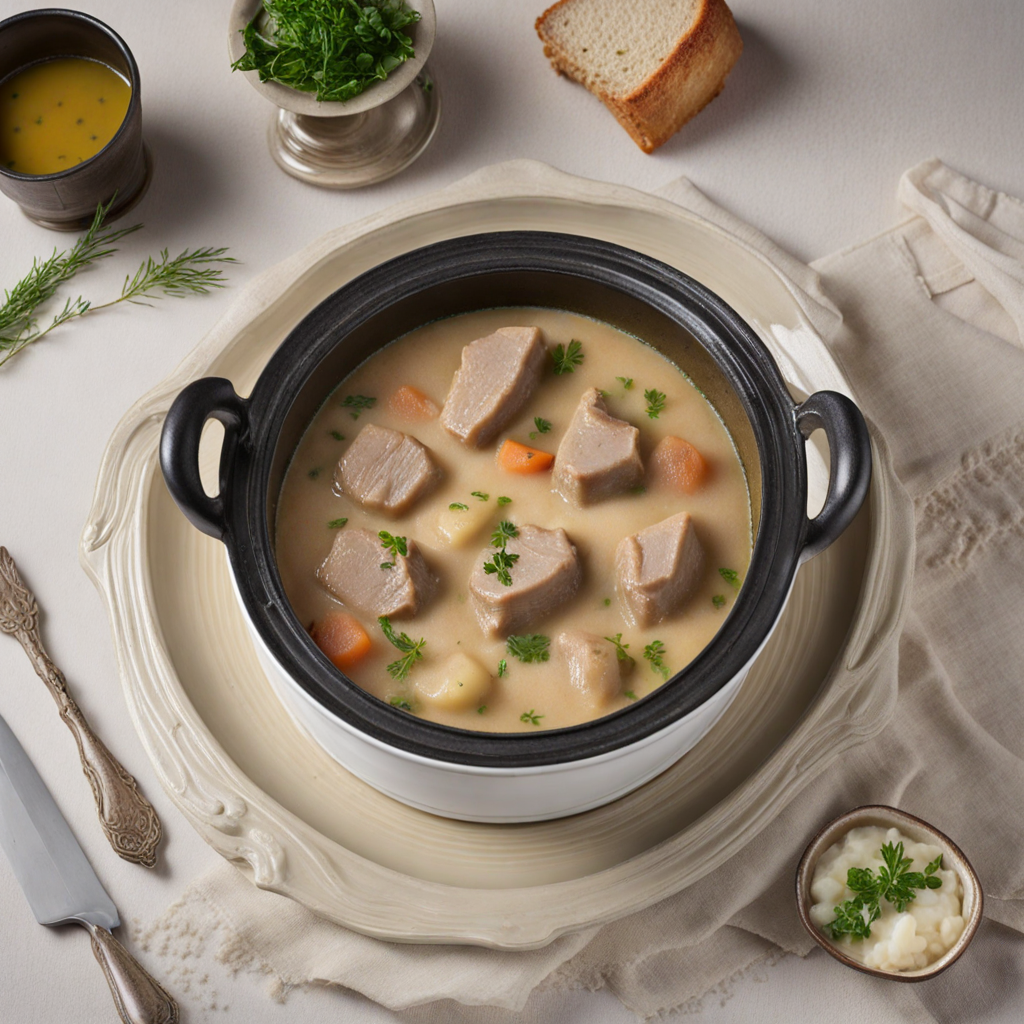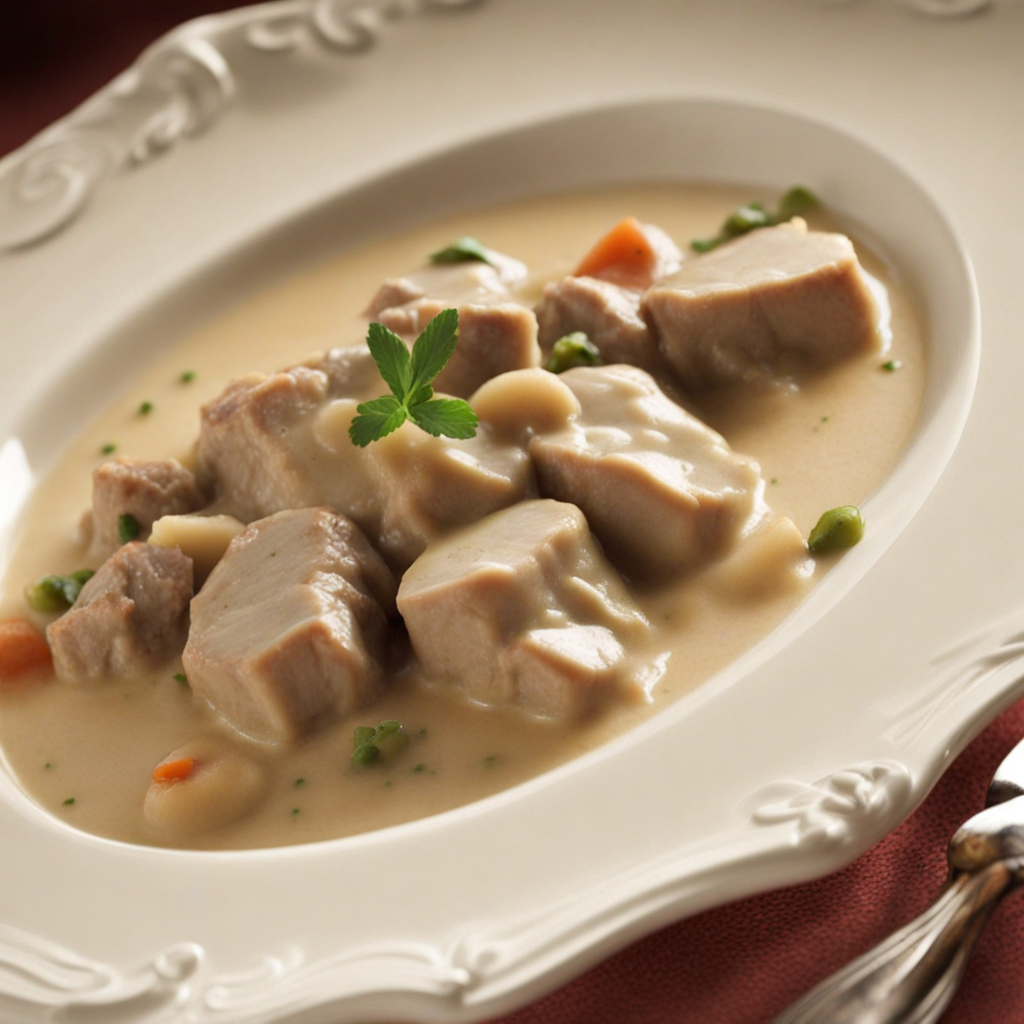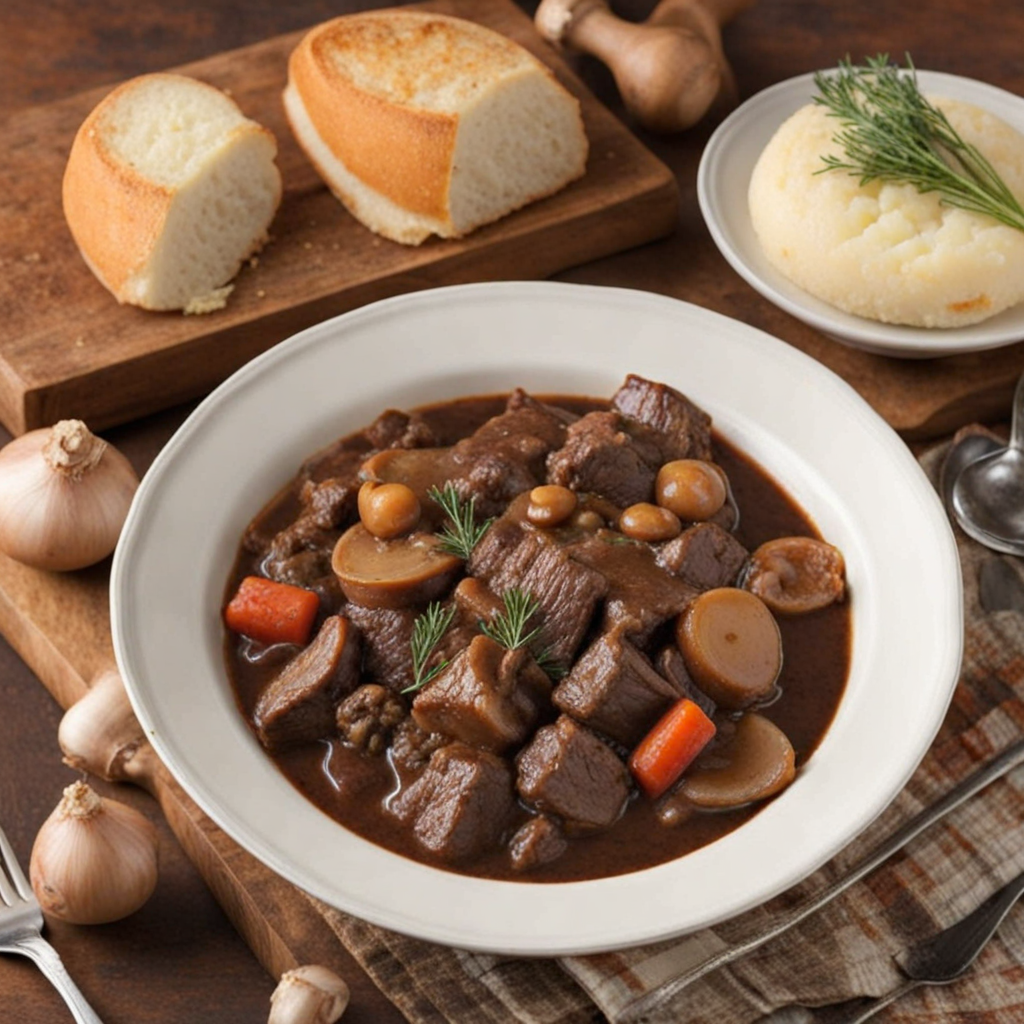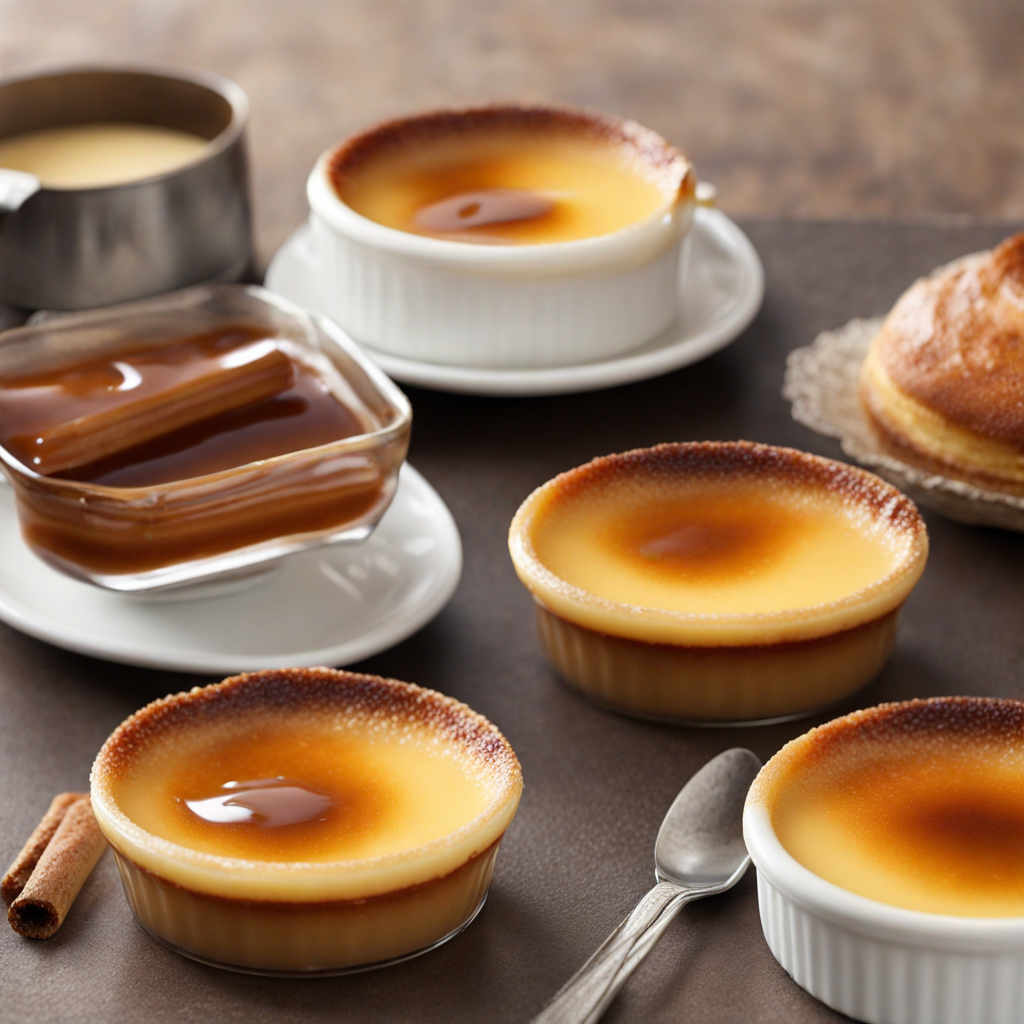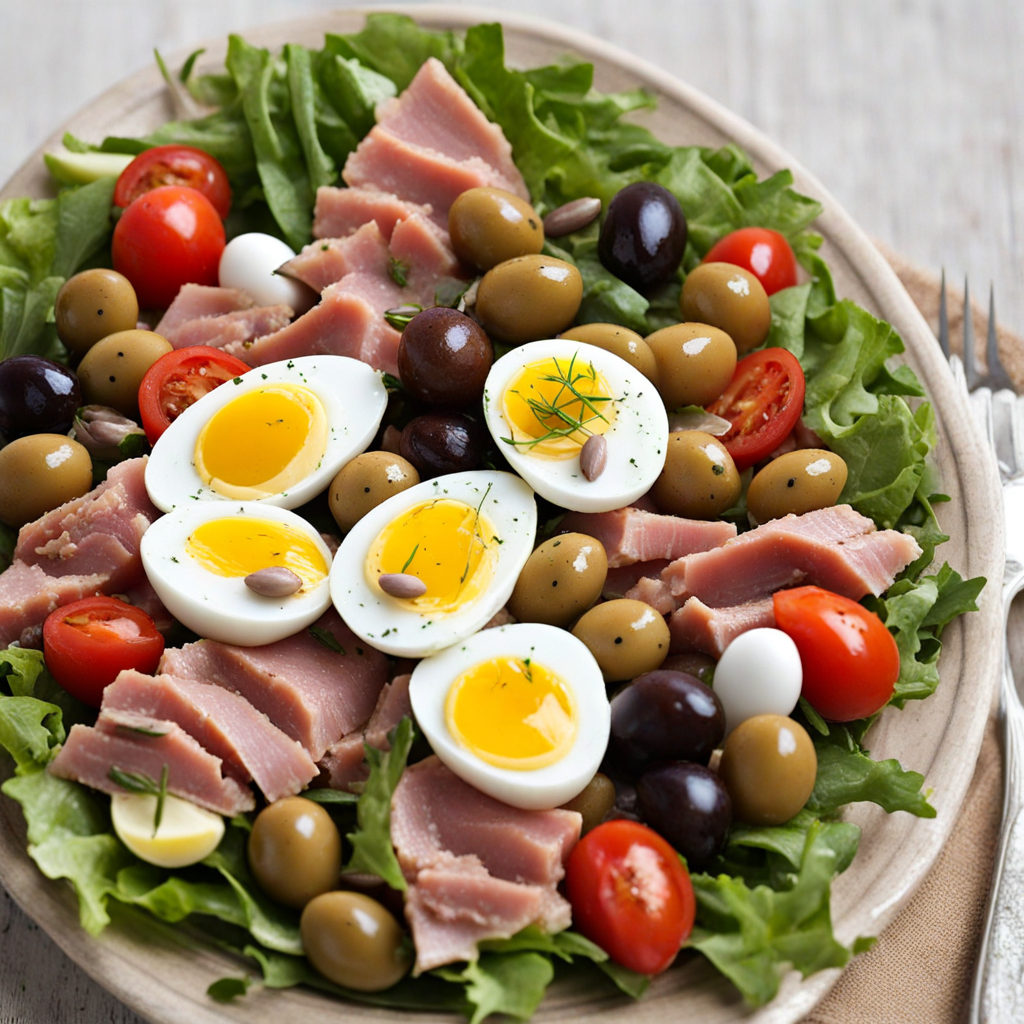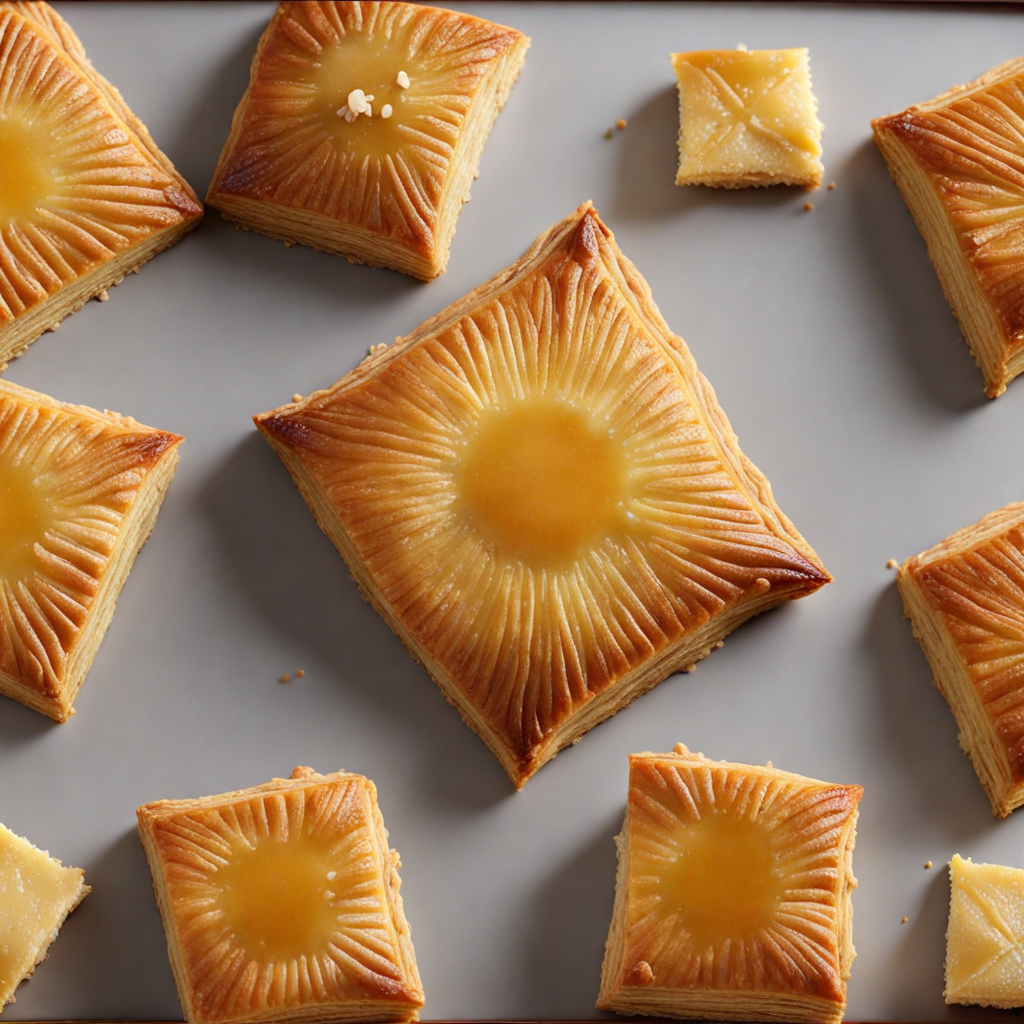Blanquette de Veau
Blanquette de Veau is a classic French dish that showcases the delicate flavors of veal, simmered to tender perfection in a rich and creamy sauce. The dish typically starts with tender pieces of veal, often from the shoulder or shank, which are gently braised with aromatic vegetables such as carrots, onions, and leeks. This slow-cooking process not only infuses the meat with the essence of the vegetables but also allows it to become incredibly tender, ensuring every bite melts in your mouth. The addition of a bouquet garni—a bundle of herbs like thyme, bay leaf, and parsley—adds a fragrant touch that enhances the overall depth of flavor in the dish. Once the veal is cooked, the star of Blanquette de Veau emerges: the sauce. A classic white sauce, known as a velouté, is prepared using the cooking liquid from the meat, thickened with a roux, and then enriched with cream and egg yolks. This creates a luscious, velvety texture that clings to the veal, making each mouthful an experience in comfort and indulgence. The sauce is often brightened with a squeeze of lemon juice or a sprinkle of nutmeg, adding a subtle brightness that balances the richness of the cream and the meat. Served traditionally with a side of rice or boiled potatoes, Blanquette de Veau is not just a meal; it’s a celebration of French culinary heritage. The dish is often garnished with fresh parsley, adding a pop of color and freshness. With its combination of rich flavors, tender meat, and creamy sauce, Blanquette de Veau invites you to savor the essence of classic French cooking, making it a must-try for anyone eager to explore new tastes.
How It Became This Dish
Blanquette de Veau: A Culinary Journey Through French History Blanquette de veau, a classic French dish, is a creamy veal stew that has captivated palates since its inception. The name itself, derived from the French word "blanc," meaning white, reflects the dish's pale appearance, which is a result of the gentle cooking method and the use of a white sauce. This dish is not just a staple of French cuisine; it is a representation of the country’s culinary evolution, cultural significance, and regional variations. Origins The origins of Blanquette de veau can be traced back to the medieval period. French cuisine during this time was heavily influenced by the use of rich broths, sauces, and the incorporation of various meats. The earliest records of similar dishes appear in the 14th century, where they often featured game meats, and were served with a white sauce made from a mixture of cream and eggs, known as a "sauce blanche." However, it was not until the 17th century that veal became a favored meat in French households. The introduction of veal into French cookery coincided with the rise of the bourgeoisie, who were eager to adopt and adapt the culinary practices of the aristocracy. The use of veal in stews became increasingly popular, as it was tender and easily cooked, making it suitable for the long, slow braising that characterizes Blanquette de veau. Cultural Significance Blanquette de veau is more than just a dish; it is a symbol of French culinary tradition and home cooking. It embodies the French ethos of “terroir,” which emphasizes the connection between food and the land it comes from. The dish is often prepared for family gatherings or special occasions, symbolizing warmth, comfort, and the importance of shared meals. In France, food is deeply intertwined with cultural identity, and Blanquette de veau holds a special place in the hearts of many. It is often associated with Sunday dinners and festive occasions, celebrating not just the meal itself but the company of loved ones. The dish reflects the values of French culinary traditions, which prioritize quality ingredients, slow cooking methods, and the art of sauce-making. Development Over Time As French cuisine evolved, so too did Blanquette de veau. The 18th and 19th centuries saw the emergence of classical French cooking techniques, with chefs like Auguste Escoffier refining and codifying traditional recipes. Escoffier’s contributions to the culinary arts helped elevate Blanquette de veau to its esteemed status in French gastronomy. His recipes emphasized the importance of a white sauce, made from a roux (flour and butter) combined with veal stock, cream, and egg yolks, which contributed to the dish's luxurious texture. In the early 20th century, Blanquette de veau became a staple in bistros and restaurants across France. The dish was celebrated for its simplicity and elegance, appealing to both the working class and the upper echelons of society. The use of fresh, local ingredients became a hallmark of the dish, with the quality of the veal being paramount. Chefs began to experiment with regional variations, incorporating local herbs and vegetables, which added unique flavors to the classic recipe. Regional Variations While Blanquette de veau has a standard preparation method, it is also subject to regional adaptations across France. In Normandy, for instance, cooks often add apples and Calvados (an apple brandy) to the dish, creating a delightful balance of flavors that highlight the region’s agricultural bounty. Meanwhile, in Provence, the addition of herbs such as thyme and rosemary can lend a fragrant herbal note, reflective of the Mediterranean climate. In the Auvergne region, where dairy farming is prevalent, the use of crème fraîche instead of heavy cream adds a tangy depth to the sauce, showcasing the influence of local agricultural products. These variations not only illustrate the versatility of Blanquette de veau but also highlight the way regional ingredients shape culinary practices in France. Modern Interpretations In contemporary cuisine, Blanquette de veau continues to be a beloved dish, often appearing on the menus of both traditional bistros and modern restaurants. Chefs today embrace the spirit of the classic recipe while incorporating innovative techniques and presentations. Sous-vide cooking, for instance, allows for precise temperature control and enhanced tenderness of the veal, while modern plating techniques can transform the dish into a visually stunning entrée. Additionally, there is a growing interest in the provenance of ingredients, leading to a resurgence in the use of organic and locally sourced veal. This emphasis on sustainability has not only elevated the quality of the dish but has also encouraged a new generation of chefs and home cooks to reconnect with the principles of traditional French cooking. Conclusion Blanquette de veau is emblematic of French culinary heritage, representing a rich tapestry of history, culture, and regional diversity. From its medieval origins to its modern interpretations, this dish has stood the test of time, evolving while retaining its core essence. It serves as a reminder of the importance of family, tradition, and the joy of sharing a meal with loved ones. As diners savor a beautifully prepared Blanquette de veau, they are not just enjoying a meal but also partaking in a centuries-old tradition that celebrates the artistry of French cooking. Whether enjoyed in a cozy bistro in Paris or prepared at home with family, Blanquette de veau remains a cherished dish that continues to warm hearts and satisfy appetites, bridging generations and regions through its comforting flavors.
You may like
Discover local flavors from France


